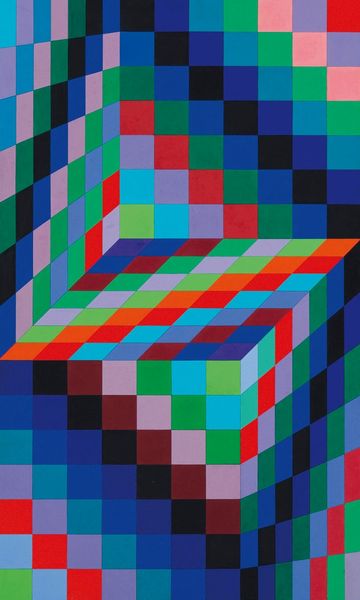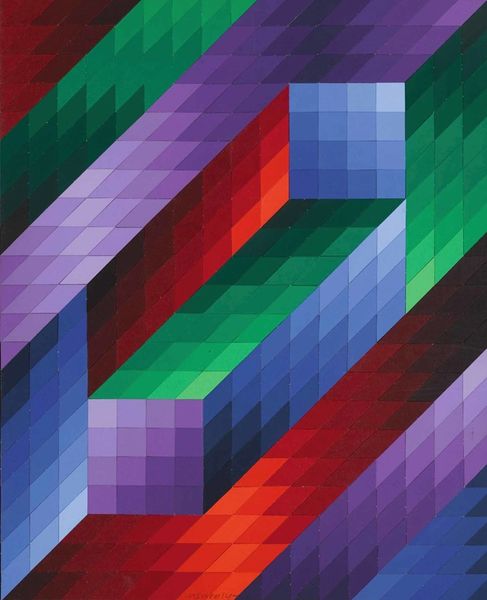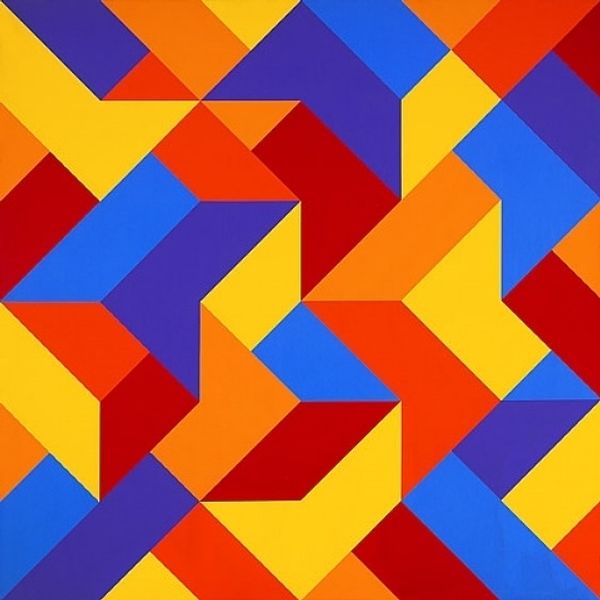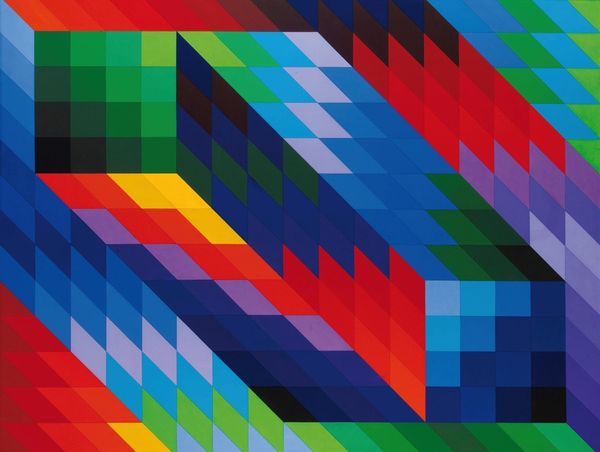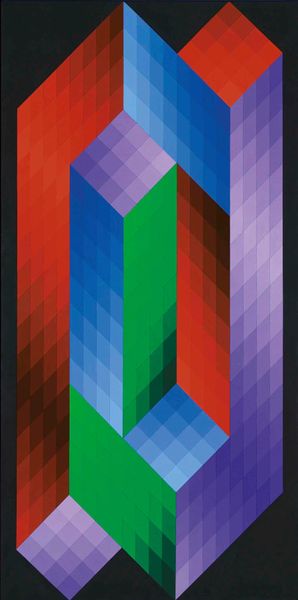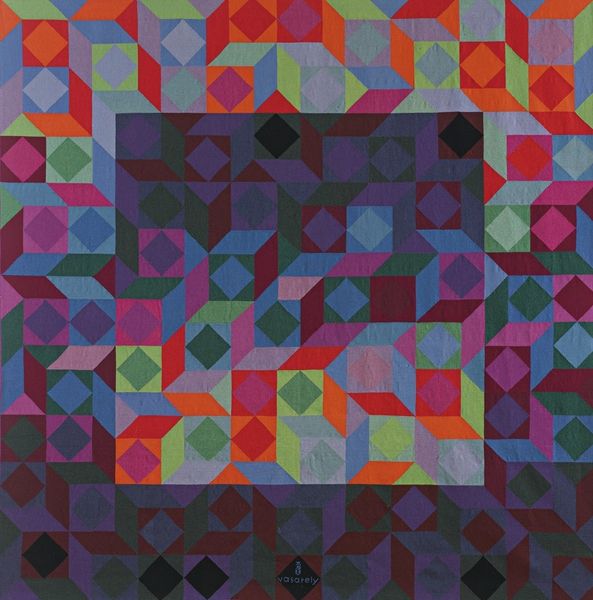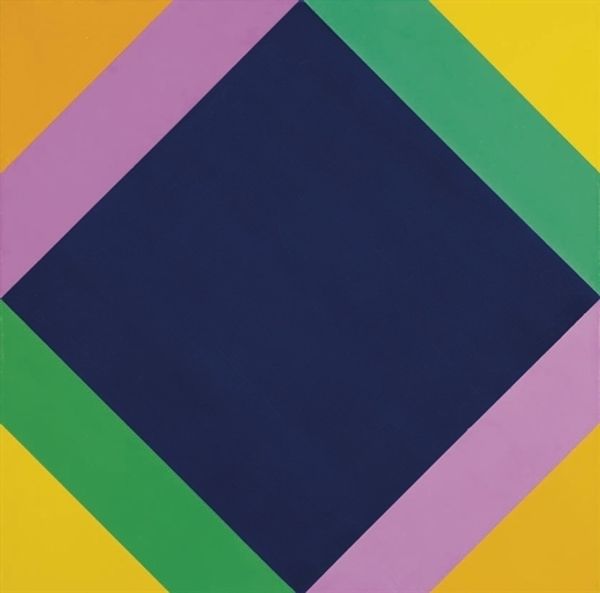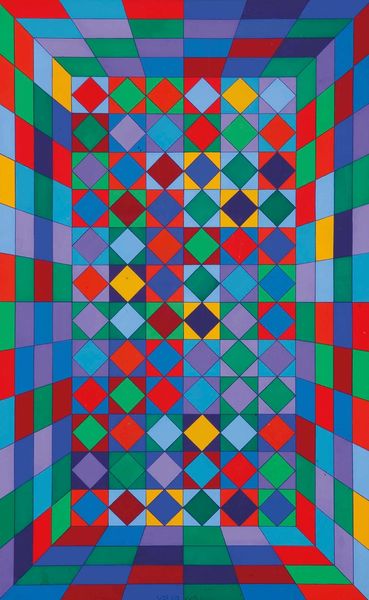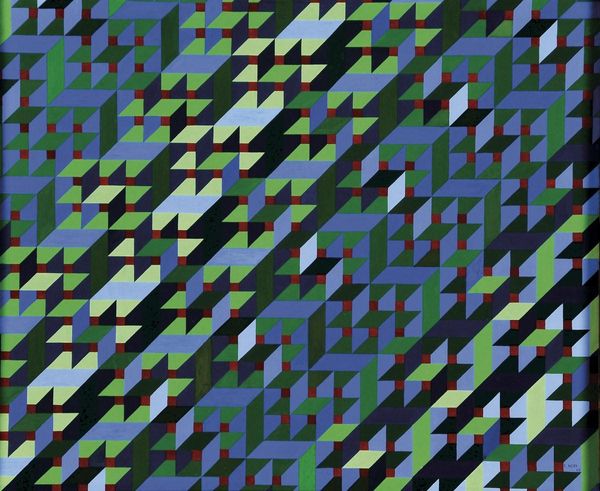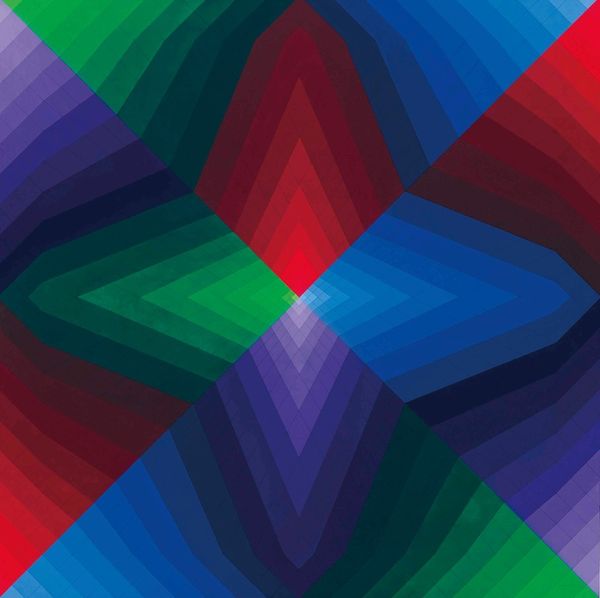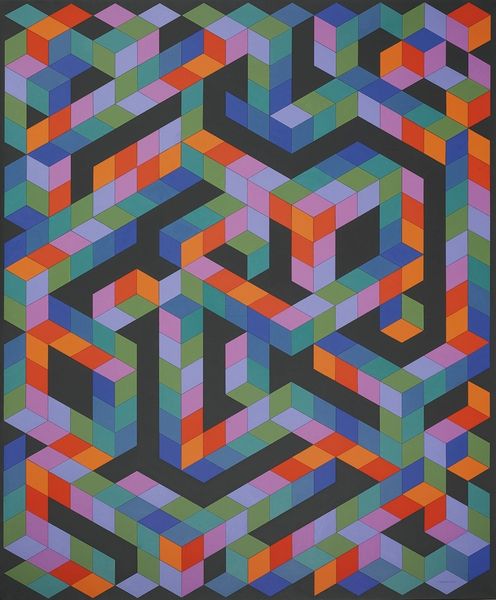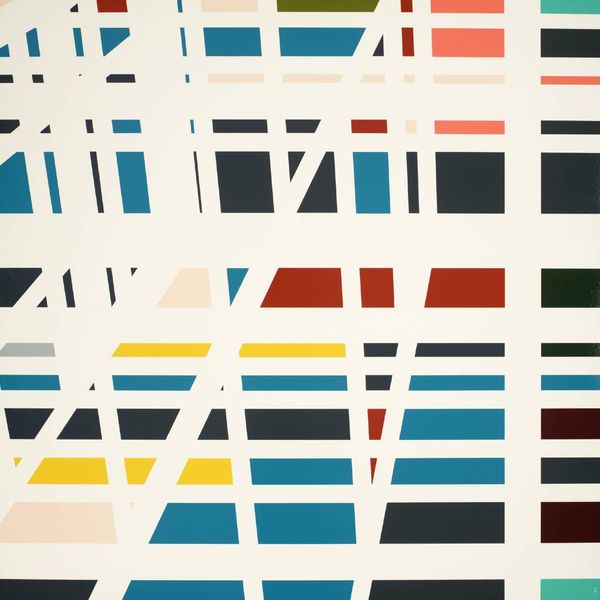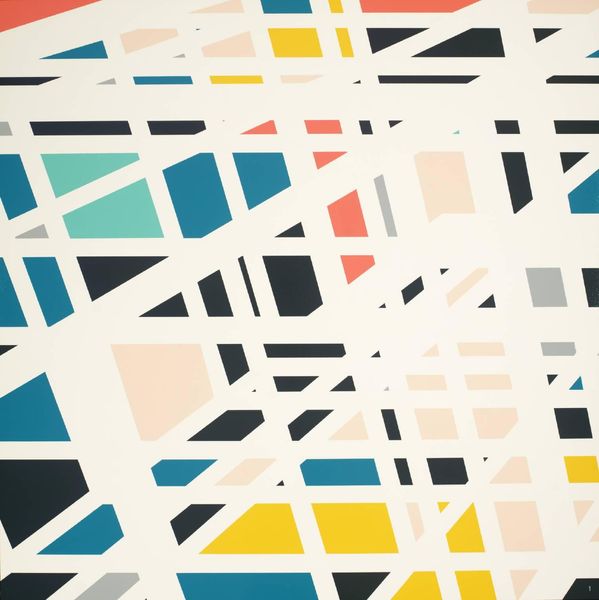
Copyright: Modern Artists: Artvee
Editor: This is "AXO-88" by Victor Vasarely, painted in 1969 using acrylic paint. It feels very… digital, even though it was made before personal computers were common. It's all about these colorful squares arranged to look like a 3D shape. What do you see in this piece, beyond just the geometric illusion? Curator: Beyond the surface, Vasarely's Op Art engages with the social and political shifts of the 1960s. It challenges traditional notions of artistic representation and invites the viewer to question their own perceptions. It's not just about visual trickery; it's a commentary on how we perceive and interpret the world around us, a world increasingly mediated by technology and mass media. How might this piece, created in a time of great social upheaval, reflect anxieties or aspirations of the era? Editor: That's fascinating. I hadn’t really thought about anxieties, just the fun of the illusion. So, you’re suggesting that these geometric patterns can be read as a reflection of broader societal shifts and a challenge to established ways of seeing? Curator: Precisely. Vasarely sought to democratize art by creating works that were accessible and engaging to a wide audience, much like the social movements of the time aimed to democratize power. His art became a tool for questioning and challenging the status quo. This push toward a universal visual language also invites dialogue on cultural appropriation and who has the authority to define visual aesthetics. Do you think that this objective to democratize artwork succeeds or risks undermining the artist's own message? Editor: That gives me a lot to consider. I'm starting to think that maybe there is more to this work than meets the eye. Curator: Absolutely. Art often serves as a mirror reflecting both the artist's vision and the social landscape in which it was created.
Comments
No comments
Be the first to comment and join the conversation on the ultimate creative platform.
